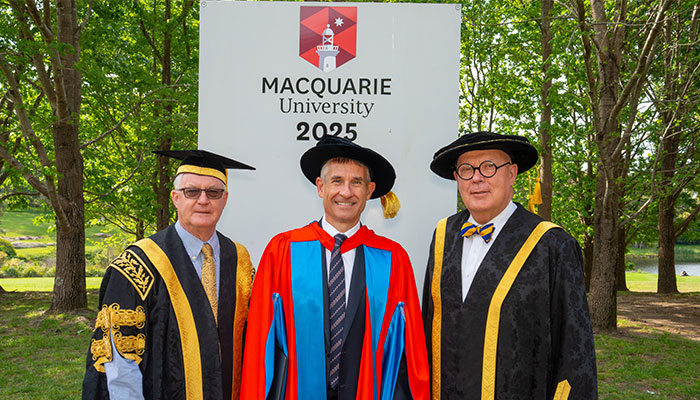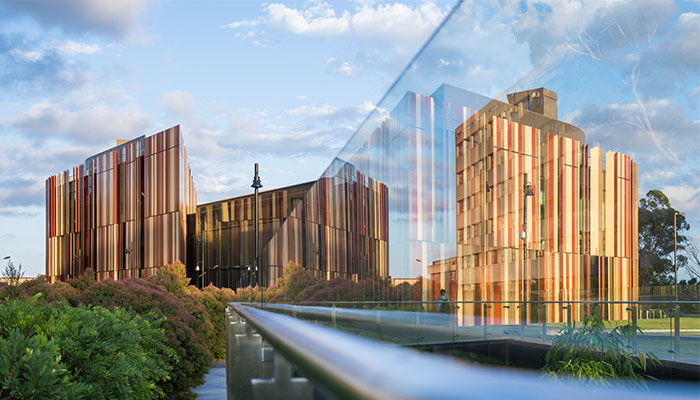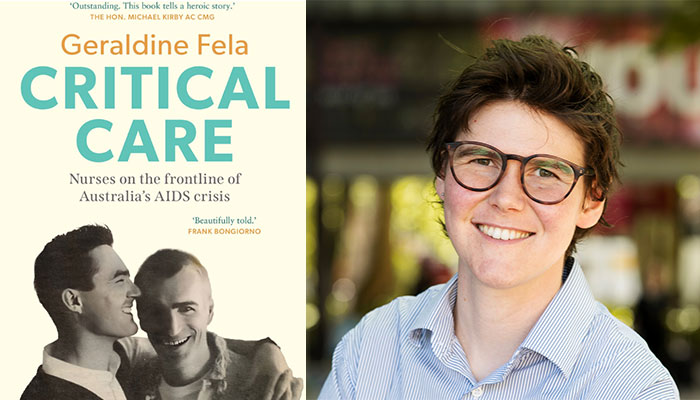Named for Australian Nobel Laureates Professors Barry Marshall and Robin Warren, the Marshall and Warren Ideas Grant (Innovation) Award recognises the most innovative and potentially transformative NHMRC Ideas Grant project each year.
The award relates to a $794,115 Ideas Grant Professor Chung received in December 2023.
The three-year project titled, “Developing novel gene expression control mechanisms for ALS (MND) gene therapies”, aims to develop a precise control mechanism to switch on and off a gene therapy as needed.
TDP-43 is a protein found in cells in the brain and spinal cord. It is important to the proper function of cells including motor neurons, but when it is not working properly, it can begin to build in the cells, forming hardened clumps.
These blockages are associated with a range of neurodegenerative diseases, including almost all cases of MND and some types of dementia.
Professor Chung and his team have been studying a common protein named cyclin F, which can tag TPD-43 for breakdown and recycling by cells.
As part of this work, they have used the gene called CCNF that expresses cyclin F to develop a potential gene therapy to clear TDP-43 build-ups.
Professor Chung says one of the most exciting things about gene therapies is that in theory they can be delivered as a single dose and will continue working for life.
“However, that is also the fundamental challenge: the therapy will continue to keep expressing even if it is no longer needed,” he says.
“We are looking for ways to solve that problem, creating switches or gene regulators that can turn off the transgene when it is no longer needed, then back on again if it is.”
PhD student Tyler Chapman is a member of Professor Chung’s team, and he came up with an ingenious potential control mechanism that he describes as working like homeostasis (the body’s mechanism for maintaining an even core temperature).
“When you get too hot, you sweat, but when you get too cold, you get goosebumps, and this works in a similar way, but for internally detecting and treating MND,” Mr Chapman says.
“TDP-43 is usually contained to the cell nucleus, but when things start to go wrong, it begins to build up in the cytoplasm (the rest of cell outside of the nucleus) instead.
“Our switch detects when TDP-43 levels drop in the cell nucleus and turns on the CCNF gene therapy, degrading the TDP-43 in the cytoplasm and getting the nuclear TPD-43 working again.
“When levels return to normal, it switches off again, but it can turn back on again whenever the TDP-43 levels change.”
The CCNF gene therapy is one of the therapeutic technologies patented and licensed to Macquarie University’s gene therapy spin-out company Celosia Therapeutics, with the aim of bringing it from the lab to the clinic.
Professor Chung says the creation of Celosia challenged them to think in different ways about their research.
“Macquarie has created an exciting bioinnovation environment which brings together academic research with industry to foster entrepreneurism and spin-outs, that stimulates the translation of basic research towards application,” he says.
“We had to pivot from purely academic research to thinking about how to translate it into the real world,” he says.
“Normally, we would be very systematic and careful about building up to a set of experiments, but with the challenges of translation, we’ve had to move outside our comfort zone.
“Tyler’s idea is an example of what we call a fast-to-fail experiment – a theory that we can test quickly, then move on to the next one if it doesn’t work.
“He’s been able to design one of the first examples of a control mechanism for a gene therapy that is actually regulated by the disease itself.”
The NHMRC Ideas Grant will allow the team to combine the CCNF gene with the switch, producing a self‑regulating therapy that could be used for MND, but also any of the other diseases with pathological TDP-43, including frontotemporal dementia.

Professor Roger Chung (fifth from right) with NHMRC representatives and award winners.



